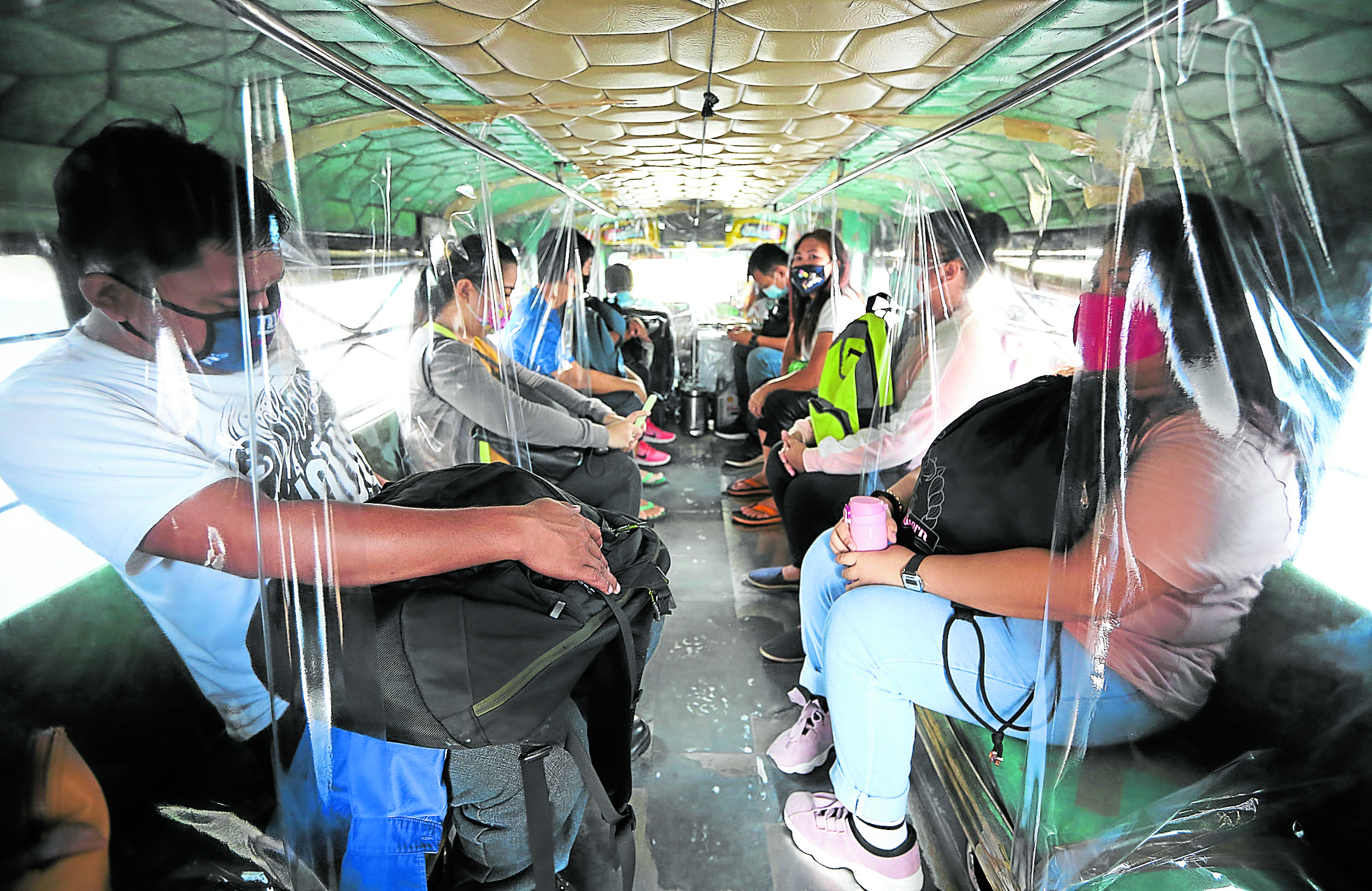QR code, other concerns stall return of Metro jeepneys
After being idled since mid-March due to the COVID-19 community quarantine, jeepney drivers in Metro Manila complained about the “negligible” number of units that was able to resume operations on Friday, something they blamed on the “confusing policies” drawn up by transport regulators.
They ranted mainly about the QR (quick response) code—a special barcode they were supposed to download from the Land Transportation Franchising and Regulatory Board’s (LTFRB) website—that would prove that their vehicles were among the 6,002 units permitted to take passengers on 49 routes across the capital.
The LTFRB’s Memorandum Circular No. 2020-026 requires jeepneys to have QR codes.
LTFRB chair Martin Delgra III said the board’s Facebook page would provide the master list of approved jeepney operators, but the list was only released late Friday night.
The board earlier said jeepney drivers on the list but who had not yet obtained QR codes could ply their routes until Monday without being apprehended for a violation.

FEWER AND FAR BETWEEN The installation of plastic partitions to ensure social distancing among passengers is among the requirements set by the Land Transportation Franchising and Regulatory Board before jeepneys are allowed to return to the streets Friday. Jeepney drivers, however, were more concerned about their failure to immediately download a QR code from the LTFRB website that signifies the board’s permission for them to ply their routes. —NIÑO JESUS ORBETA
Rationale questioned
The assurance did little to appease the drivers, who questioned the rationale behind the issuance of the QR codes.
“Several drivers and operators found out only on Friday morning that having the QR code was still not necessary, [but] a lot of them just decided not to go out,” said Efren de Luna, leader of the Alliance of Concerned Transport Operators. “We think the first day was an embarrassing failure.”
Jeepney driver Jimmy Espiritu said he already reconfigured the interior of his vehicle with plastic barriers and dividers after hearing that the LTFRB included the Libertad-Evangelista route, which he plies regularly.
Rushed compliance
But he worried that, without a QR code displayed on his windshield, he might be flagged down by traffic officers. He said he would rather wait until Monday.
Piston chair emeritus George San Mateo said many drivers scrambled to comply with the many requirements outlined in the memo, which was released less than 48 hours before they were supposed to go back to work.
San Mateo said that in some instances, Piston members failed to register their vehicles under the new rules because transport offices were closed due to the pandemic.
Or in the case of driver Joseph Ejercito, he has completed documentary requirements but still needed to retrofit his jeepney. As of Friday afternoon, he was still busy installing plastic barriers and dividers inside his vehicle.
Reduced income
San Mateo said these requirements would cost at least P1,000 “and drivers didn’t want to spend extra on plastic barriers when they are not yet sure of recovering their expenses.”
Many of them would rather work on Monday “just so they’re sure they have prepared everything,” he added.
Those who were able to ply their routes on Friday earned less than usual due to the 50-percent reduction in their passenger capacity, San Mateo said.
“That’s the most obvious consequence of the minimum health standards,” he lamented. “But honestly, our drivers are conscious that because of the pandemic, whatever they were earning before cannot be earned now. They’re just trying to earn the barest minimum needed for their starving families to get by.”
San Mateo said “we [in Piston] think the government was pressured to let us return, but we don’t think this concession can last as long as the Department of Transportation is hell-bent on pushing through with the phaseout of old jeepneys.”
Transport officials could not immediately provide an estimate of the number of jeepneys that returned to Metro Manila streets on Friday. San Mateo said the number was “negligible … but still a half-win for the sector.’’
“We call on everyone—even those who are already able to ply their routes again—to not stop clamoring for the return of all 75,000 drivers,” he said.